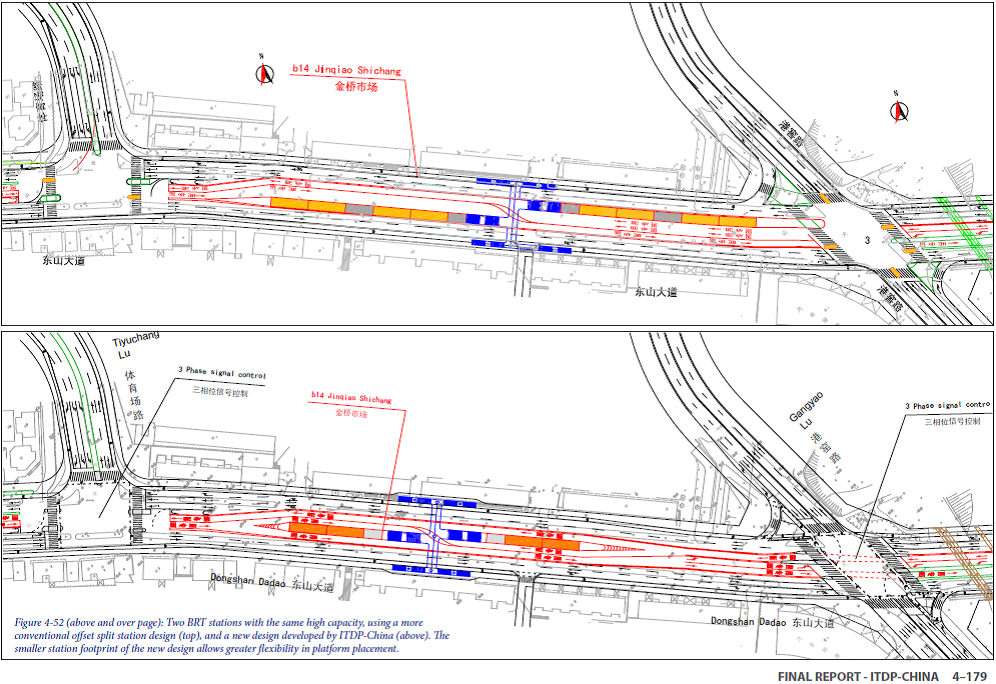25.4Types of Stations
On buses and trains, I always think about the inexhaustible variety of human genes. We see types, and occasionally twins, but never doubles. All faces are unique, and this is exhilarating, despite the increasingly plastic similarity of TV stars and actors.Antonia Susan Byatt, English novelist and poet, 1936–
25.4.1Island Stations
Island stations are a single central platform serving two directions of traffic. Well known examples include Bogotá and Cali.

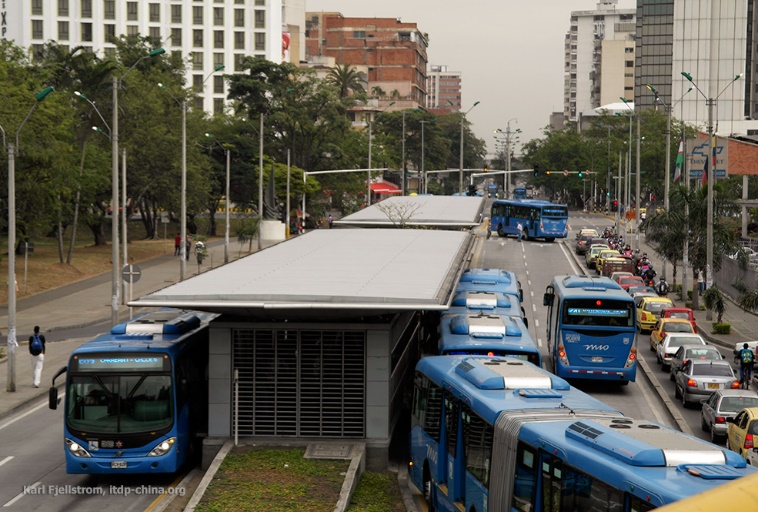
25.4.2Split Stations
Split stations, usually located in the center of the roadway, consist of separate platforms serving each direction of traffic. Well known examples include Guangzhou and Brisbane.
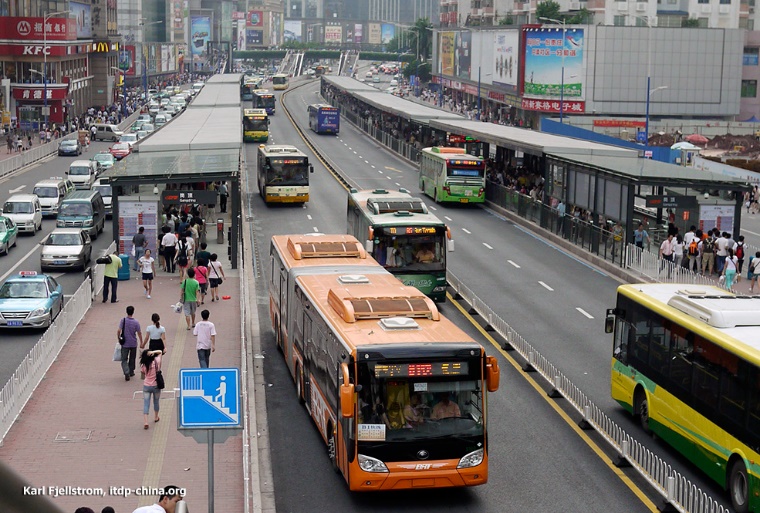
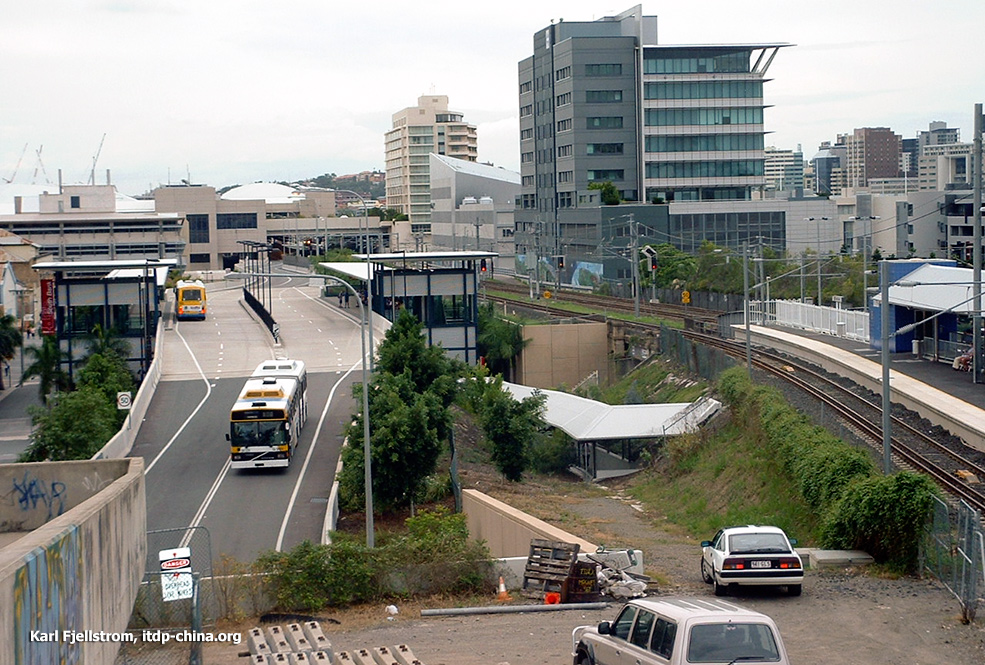
25.4.3Offset Stations
Offset stations are longer, but requires less overall road width: typically around 3.5 meters of width is saved while the length of a standard central platform is doubled. Both island and split stations can be offset in this way.
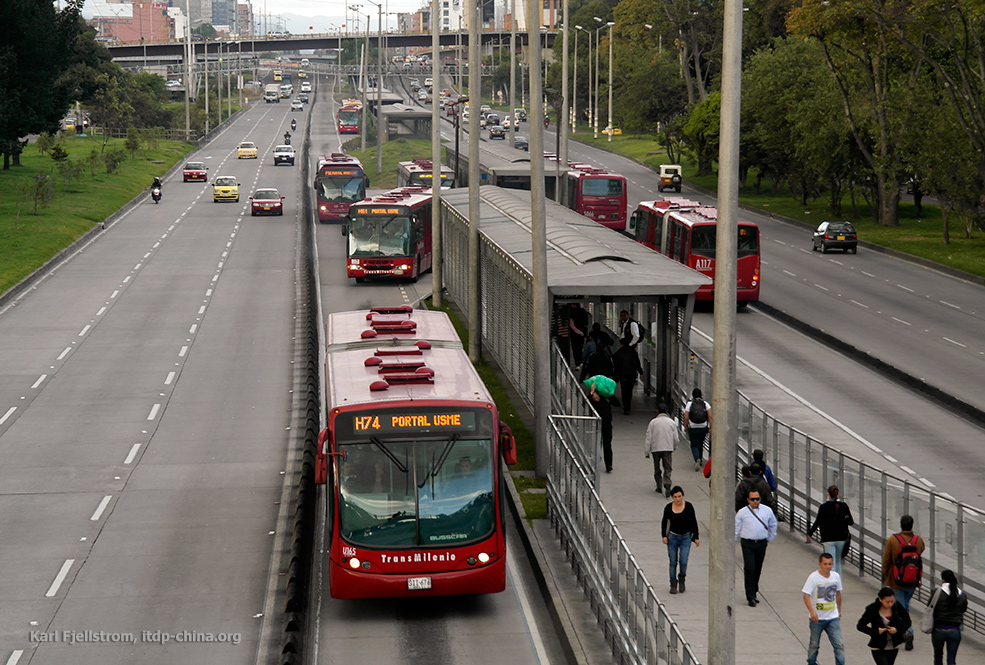
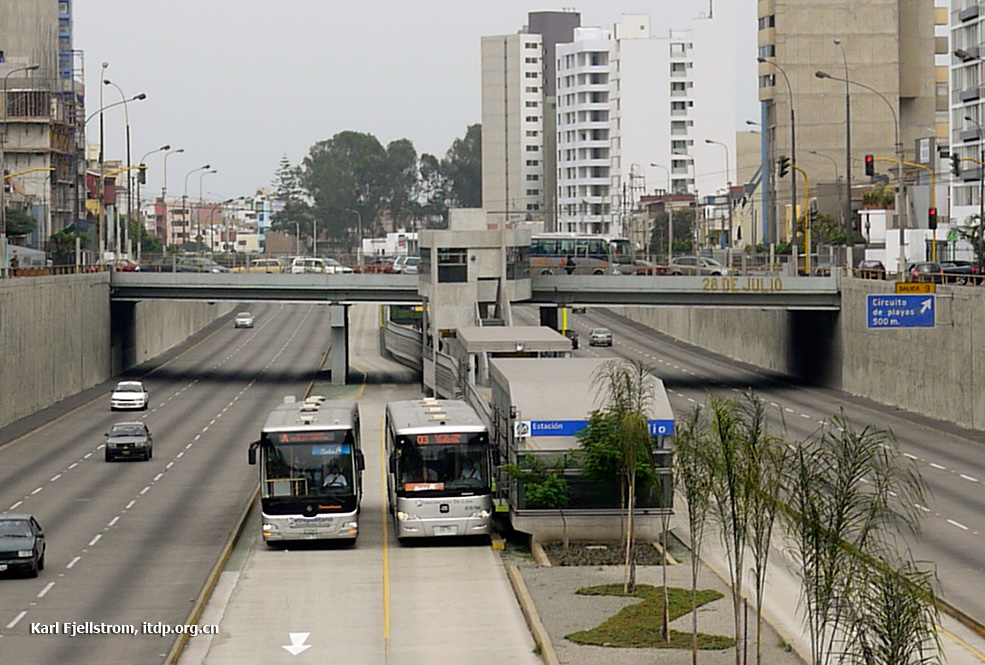
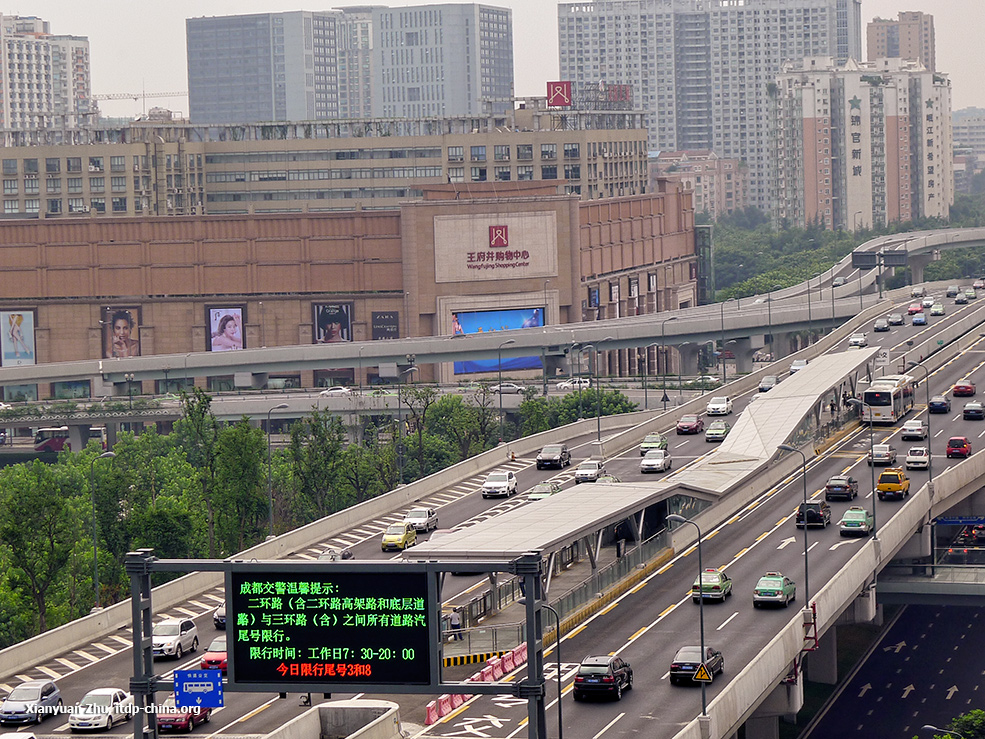

25.4.4Directional Stations
The most striking difference between Lanzhou’s BRT, which opened in 2013, and other high-capacity systems is a new split-station concept that allows for BRT buses traveling in the same direction to stop on both sides of a boarding platform. This new design, applied to multiple stations in a BRT corridor for the first time in Lanzhou, offers roughly the same capacity as that of a traditional offset BRT station, but with half the station length and only around one meter in extra width. This design is being applied in the planning and design of several BRT systems currently under development, including in Yichang (opened in 2015) and Tianjin, China, and Kuala Lumpur, Malaysia.
The main limitations of this new station configuration are firstly that it is limited to two sub-stops in capacity terms, and secondly that it renders express routes less effective, especially at stations nearing the two-sub-stop capacity limit. The configuration also misses out on the advantages of a single central platform compared to split platforms. In order to get around the two-sub-stop limitation, in the two station platforms requiring more than two sub-stops in Lanzhou (the east platform of Xi Zhan and the south platform of Peili Guangchang station), a different configuration was used to enable three sub-stops. In Tianjin, in the few very high demand stations requiring three sub-stops a more traditional central platform with three sub-stops was used. Most cities and corridors require a maximum of two sub-stops, which with articulated buses can accommodate more than 15,000 passengers per hour per direction, suggesting that this new configuration has wide potential application.

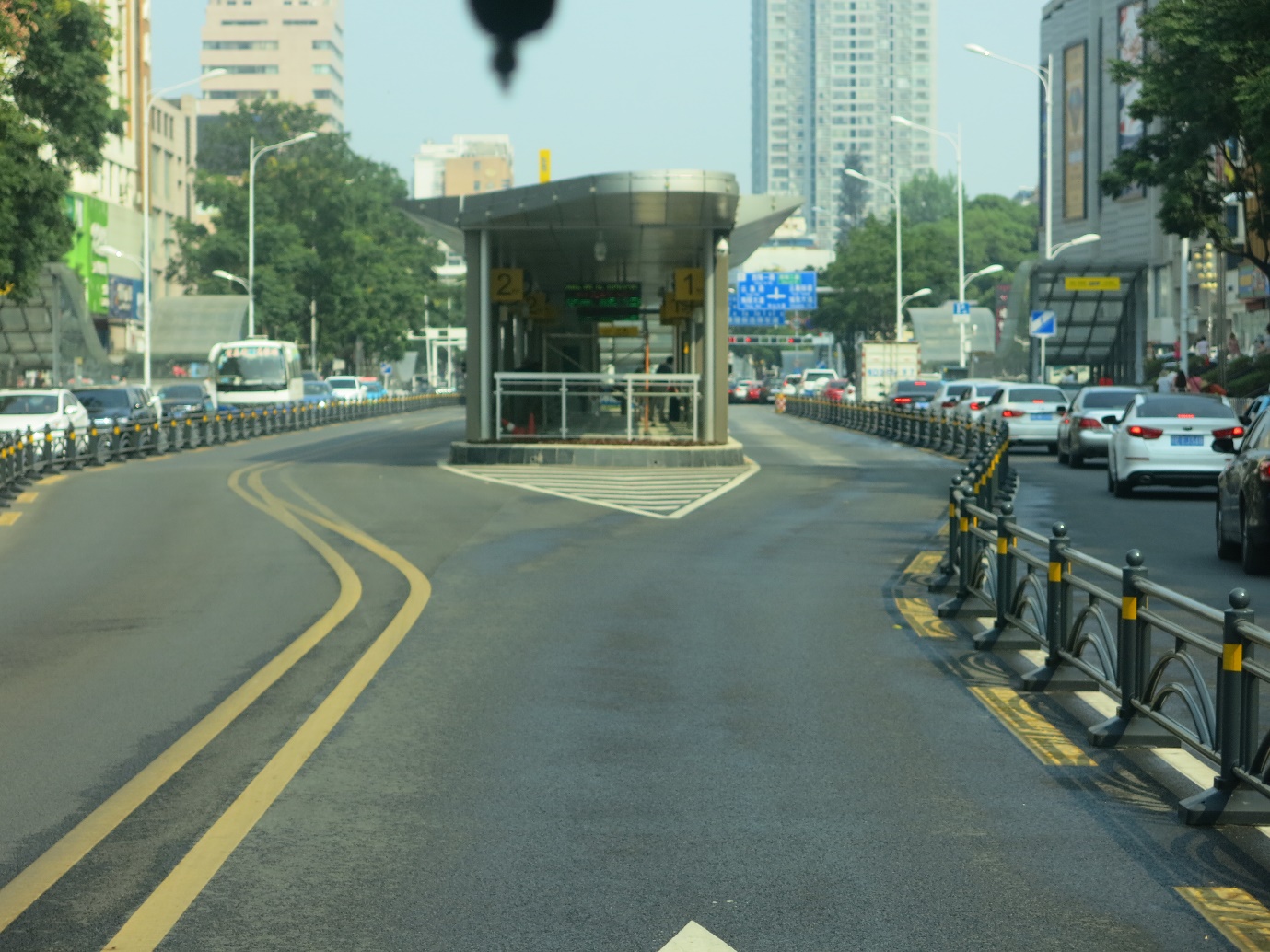
A traditional offset two-sub-stop station in this location would be 240 meters in total length. This would make the station very hard to fit into the distance available between the two intersections. The new design on the other hand requires only 130 meters in total length. These two designs provide roughly the same BRT station capacity, subject to the limitations described above, yet the new design is only slightly more than half as long. The advantages of the new design were recognized by Yichang officials and implemented in the Yichang BRT system.
